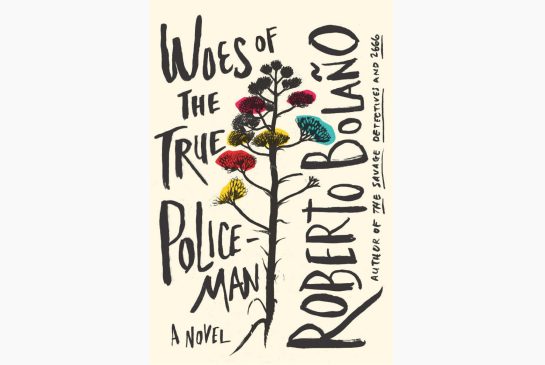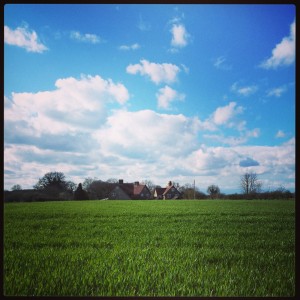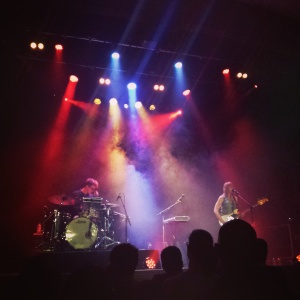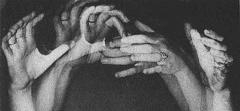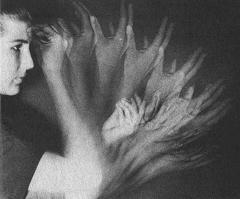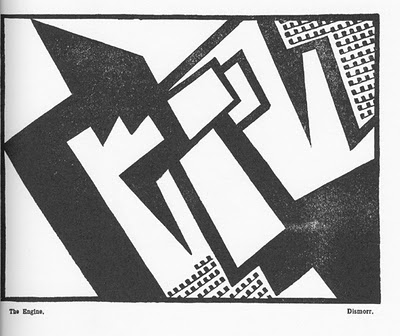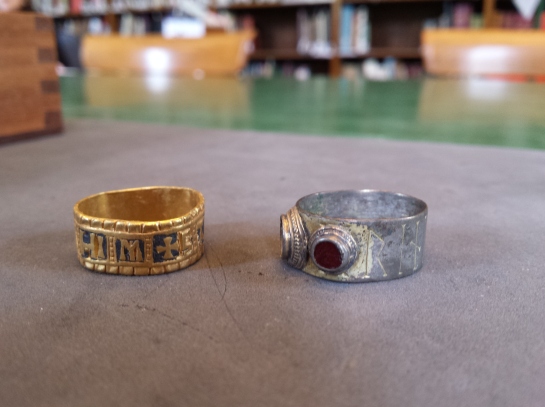 I am spending all of my summer months working on the riddles of the Anglo-Saxon Exeter Book, or as Craig Williamson calls them: the feast of riddle-song creatures. When people ask me what my dissertation is about (a dangerous question) I’m always struggling with and reworking, twisting and turning into shape, a good definition of exactly just what an Anglo-Saxon riddle is.
I am spending all of my summer months working on the riddles of the Anglo-Saxon Exeter Book, or as Craig Williamson calls them: the feast of riddle-song creatures. When people ask me what my dissertation is about (a dangerous question) I’m always struggling with and reworking, twisting and turning into shape, a good definition of exactly just what an Anglo-Saxon riddle is.
An early editor of the riddles, Frederick Tupper, described riddles as metaphoric: for ‘not only are metaphors the germs of riddles, but enigmatic elements appear in all metaphors.’ While John D. Niles offers us this scholarly definition: ‘In essence the art of riddling is the art of deceptive speech. Here […] the thing or object whose name is to be guessed speaks in its own voice. The speaker-subject tries to disguise its identity not through the usual human stratagems of silence or lies, but rather through the artful use of metaphor and other forms of deliberate ambiguity.’ But again and again, I ask how I might rephrase these definitions to come up with my own independent answer.
Roberto Bolaño, the Chilean-born writer, unconsciously offered me this wonderful alternative definition of the riddle, in his unfinished novel Woes of the True Policeman. It, in turn, needs to be decoded for its usefulness, for its relevance:
‘At the age of fifty he decided to apply himself to the School of Thought, which should really be called the School of Hidden Words, and involves guessing the objects that an audience member is carrying in his or her purse or wallet. For this trick it’s necessary to have an assistant who uses coded language to inquire after the objects. But it can also be performed without an assistant, according to the magician Arturo de Sisti, by working solely from a person’s external appearance, an alphabet that leads via unexpected yet clear channels to the things he keeps in his pockets. In this case the hidden words aren’t those uttered by an assistant but those spoken by a tie, a handkerchief, a shirt, a hat, a dress, a necklace: words barely whispered, concise words that hardly ever lie. This is not, let it be said, a matter of judging by appearances, but rather of establishing a correlation, a continuity, between what is in plain sight and what – by virtue of its small size or for the sake of convenience – is tucked away.’ [p.165-166, Roberto Bolaño, Woes of the True Policeman]
What Bolaño’s School of Hidden Words reminds us, is that the riddles -even when they are silently enclosed between the boards of a manuscript – are an exchange between two people (made present in the invocation of coded words & language). There is always a tricksy riddler made invisible by the manuscript pages, and a de-riddler goaded and provoked by the formulaic challenge of the riddle’s close: ‘Say what I am called.’ In Bolaño’s version the audience member is given an unexpectedly active role (they hold the unknown objects), and similarly the Old English riddles often trick the reader & listener into making objects, things and creatures speak: ‘Tell me how this ring came to speak before the people’ one riddle asks, and we can’t help but feel that we have, unwittingly, animated the ring with our own voices, making it speak anew.
I like the idea as well, that the riddle subject might be a thing hidden in the pockets of the riddler; the riddle object is never far away from the riddling moment, it lies veiled beneath the surface, partially perceived – waiting to be pulled out of the riddler’s pockets to be fully disclosed to its audience. Bolaño says that the trick involves ‘an alphabet that leads via unexpected yet clear channels;’ the ‘alphabet is the ‘riddlic’ language comprised of poetic formulas and inherited traditions from the Latin enigmata, as well as a series of conventions which help the initiated to see more ‘clearly’ to the heart of the riddles to unlock some of their unexpected metaphors. Thus this little riddle:
I saw in a corner something swelling
Rearing, rising and raising its cover,
A lovely lady, a lord’s daughter Buried her hands
in that boneless body,
Then covered with a cloth the puffed-up creature.
[Riddle 45, translated by Richard Wilbur]
…is not an unexpected innuendo, but clearly the bread dough left to rise by the lovely lady, of course (it couldn’t be clearer). The unexpected channels always seem clear once we know the solution. Bolaño goes on to remind us that this is ‘not a matter of judging by appearances;’ even when a series of material objects seem to appear right before our eyes (a tie, a dress, a necklace; a weapon, a songbird, an ageing woman) we are required to establish a correlation, a continuity between these visible objects and the hidden solutions.
I think Bolaño has done an excellent job of helping me explain my riddles. Perhaps with Bolaño’s decoding tools you might be able to figure out the solution to the beautifully obscure Riddle 31, translated here by David Wojahn:
Wondrous is this world, incomparable Its trappings and adornments.
And in a house I watch a strange thing singing.
Bizarre beyond words is its form
And unearthly is this creature’s shape.
Strange bird -though her beak sags down
Her feet and talons bristle upward.
Though she cannot take wing or waddle,
She puffs herself up, and attends to her work,
Her speciality . All the men have gathered
And among them she circles. Beside them as they feast,
She roosts and waits her turn. And then,
How artfully her talents entrance them,
These drunken thanes and earls. But not
A bite of food or drink will pass her lips.
Sly, ambitious, yearned-for, she keeps her mouth shut.
But from her foot a melody arises:
Ravishing is her gift for song. How wondrous
Strange it is – that jeweled foot singing!
And now her brothers come, supplicants,
Adorning with baubles and ringlets her white
Naked neck. Tell me poets, you who so smugly
Proclaim your vast powers of invention,
What manner of creature is she?
Leave your solutions in the comments if you like. And if you would like to read more about the riddles pick up The Word Exchange: Anglo-Saxon Poems in Translation [edited by Greg Delanty and Michael Matto] or have a look at this fabulous pun of a blog, The Riddle Ages for commentaries on each of the riddles.

